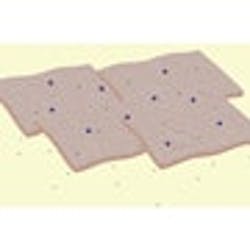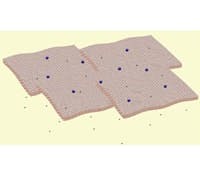Nanosheets Promise Energy-Efficient Separations
After more than a decade of research, a team at the University of Minnesota, Minneapolis, has come up with a way to produce free-standing ultra-thin zeolite nanosheets suitable for fabricating sieves or membranes. Such sheets should enable lower-energy-consumption separations, hope the researchers. "Separations of aromatics is the application we have the most experience with and have demonstrated very promising performance," notes Michael Tsapatsis, a professor of chemical engineering and materials science who leads the efforts.
"We think this discovery holds great promise in commercial applications," says Kumar Varoon, a Ph.D. candidate involved in the research. "This material has good coverage and is very thin. It could significantly reduce production costs in refineries and save energy."
Structural deterioration, fragmentation, curling and aggregation have afflicted zeolite nanosheets previously made via exfoliation, the researchers explain. Their dissolution and purification process yields flat, flaky, exfoliated crystalline nanosheets of high purity and thickness uniformity (Figure 1) capable of producing a highly packed and oriented coating. Such nanosheets suit the fabrication of thin zeolite membranes, they add.
The process involves preparing MFI and MWW nanosheets, followed by exfoliation via melt blending with polystyrene. The resulting polystyrene nanocomposites are placed in toluene and sonicated to dissolve the polymer and create a dispersion of nanosheets. So, far, the team has created sheets typically with dimensions of around 0.5 µ × 0.5µ × 3 nm. A recent article in Science provides more information on the technique.
"We will attempt to extend this method to other zeolite nanosheets. In the past we have worked with aluminophosphate molecular sieves. We will revisit those with our new technology," says Tsapatsis. "With the two materials we already have (MFI and MWW nanosheets), we will attempt to find simpler and more economical methods to produce the nanosheets and we will work on improving the porous supports they are supported on. Lower cost, higher flux supports will be targeted… I expect to have improvements on both fronts in one-to-two years."
Pilot-scale trials may begin in 2012, he says.
The film formation method lends itself to large-scale membrane formation on low-cost commercially available porous supports, the researchers believe.
The team has a provisional patent on the technology and is looking for partners to cooperate on development and commercialization.

